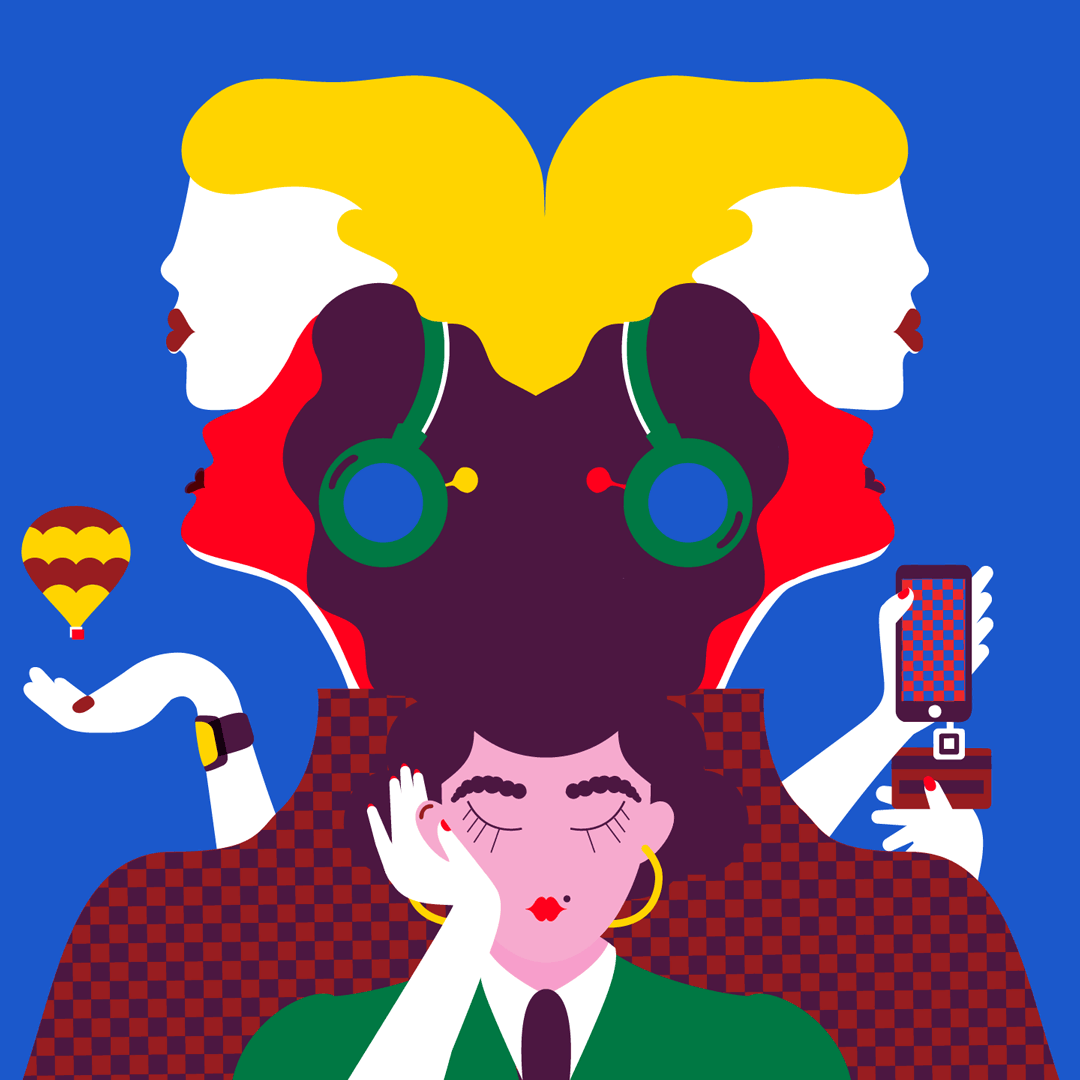
Trends 2018

Algorithm Hall of Fame
From banking to dating apps, algorithms power our world. Google’s PageRank algorithm, one of the most celebrated pieces of software in computing history, has dramatically changed both the way we access and how we value information. It has become such a profound part of our lives, it’s catapulted the company’s name into our everyday vocabulary. Don’t believe it? Google it.
Algorithms have become celebrities for their public achievements. IBM’s Deep Blue came to fame when it beat world chess champion Garry Kasparov. More recently, Watson, their AI platform, shot to stardom for beating the biggest winners from the TV show Jeopardy!, a game that relies on natural language understanding and knowledge of popular culture. Looking forward, this recognition will manifest in everyday behaviors. Soon, we’ll make purchasing decisions based on the specific algorithms underpinning our favorite products and services. The AI systems behind a company’s products and services will inform our financial, healthcare or transport choices.
Likely candidates for new entries to the Algorithm Hall of Fame? The first system that wins the race for full Level 5 Autonomous Driving Cars. The intelligent trading platform that makes global universal basic income a possibility. The machine learning system that revolutionizes cancer diagnostics and makes prevention possible. No matter what comes next, it’s only a matter of time before these gain more attention for their contributions to society.
Gonzalo Garcia-Perate, Principal Solutions Architect

Machines Before Medicine
The next big thing in preventative medicine may be not be medicine at all, and it’s unlikely to come in a pill bottle. Instead, digestible robots will become your body’s advocate, patrolling for illness to keep you healthy from the inside, before you may even become aware there’s a problem. All the while, it will inform personalized, targeted, intelligent advice to help you get healthier. Trained to detect and treat different medical issues, edible health robots will also travel through the bloodstream to deliver important nutrients.
Similarly, digital therapeutics, or ‘Digiceuticals’ as it’s also called, is a growing health discipline and treatment option that uses digital and connected-health technologies. Many who suffer from conditions like arthritis, migraines and depression will benefit from these digital alternatives to traditional medicine.
A digital approach may also be the next generation of addiction treatment and rehabilitation, especially to fight the growing opioid epidemic. Every day, more than 90 Americans die after overdosing on opioids every day, according to the National Institute of Drug Abuse. Digital therapeutics could get addiction rehabilitation into the hands of people who need it most—those who could not otherwise afford treatment.
Tingyu Chen, Interaction Designer
Jona Moore, Executive Technology Director

Shopping Gets Contextual
There’s an incredible amount to gain by bringing more contextual guidance into our shopping experiences. Imagine a grocery store that offered a helpful nudge in the right direction in the form of recipe recommendations and meal plans based on which aisle you were browsing and your stored preferences. Or, say the store had an app that tracked your purchases to help you keep more food from ending up in the trash. Signature moments like these will bring value initially by saving customers time and cost, but they also open the door to scaling these savings to broader economic and environmental levels that stand to impact everyone.
Businesses are already feeling the pressure of bringing new value to their brick-and-mortar locations. Ecommerce and personalized subscription services continue to challenge traditional retail models. Now, companies will look to combining user data with new technologies like augmented reality and machine learning systems to help customers better engage with products both in their stores and in the world-at-large.
Still, companies will have to respect the threshhold between helpful advice and being overly enthusiastic with messaging. Forcing a hard sale and coming off as pushy—especially at the wrong moment of time for an individual user—can put the relationship between a customer and brand at risk.
Madhavi Rao, Senior Strategist
Toshi Mogi, AVP Strategy and Innovation

Hardware Gets Even Warmer
In 2017, our hardware got a little warmer. New Google Homes and Amazon Echos launched with bases wrapped in fabric, better reflecting the cozy living spaces they’re designed to be invited into by customers. We also saw softer hues on devices such as the Nest thermostat and rounded corners on Samsung and LG phones.
Looking ahead to 2018, hardware will start to become more expressive. As our devices continue to hold a critical place in how we live our daily lives, consumers will demand options that fit their style seamlessly and aid in self-expression. Soon, our gadgets will be merged into our fashion choices. Products will be made in brighter, more vibrant colors, with materials that are soft to the touch or that feature prints and graphics we are proud to wear in style.
Meanwhile, even the virtual personal assistants embedded into our hardware are getting warmer. To increase adoption and personalize these experiences, virtual assistants are becoming friendlier, more human and more in-tune with our preferences. Gone are the days of cold, robotic voices and phrases that feel generic to all users—your bots’ personalities will soon uniquely complement you.
Sam Haddaway, Strategist

Great Digital Artists Steal
With augmented reality (AR), any work of art has the potential to become a collaboration. Now’s your chance to add your finishing touches to the statue of David by Michelangelo, without being removed from the premises by a museum security guard. Michelangelo’s interpretation of the human body will be constantly updated in different augmented layers for the foreseeable future. As more people use AR to contribute their own digital overlays to their physical environments, the question now is: who owns what we see?
AR is still wild territory, with behemoth media companies vying to use this new technology to provide content for the masses. But ownership in the physical world doesn’t apply in the digital one. Enter a new age in contemporary art, one where people can express themselves collaboratively in the digital and physical realm. Think mixed-media taken to a whole new dimension, one where people not only have access to public art, but the expectation they can add their own signature without leaving a mark.
For businesses using AR, this means consumers will expect a level of collaboration, designing alternate experiences in tandem with brands and creators…with or without their permission.
Kristina Phillips, Strategist

A Crypto Democracy
Blockchain is no longer just for currency exchange; it’s a new platform for civic engagement. Because it changes how votes are collected and minimizes the risk of fraud or manipulation, blockchain technology may be what helps more voices get heard in government matters and policy decisions. By the 2018 midterm elections, we may just see an end to paper ballots altogether.
The public sector will also benefit from blockchain applications, including helping to manage taxes, registrations—even healthcare operations. Activists will continue to deploy blockchain in unlikely ways to service specific needs. Take, for example, the Bail Bloc app. Known as the “cryptocurrency scheme against bail,” the app invites its users to convert their unused power into funds to help those who can’t afford to get out of jail.
And business isn’t backing away from blockchain anytime soon, especially for certain sectors. Even as the cannabis industry gains momentum legally, conventional banking options are still out of reach. Today, nearly 75 percent of all cannabis businesses operate without bank accounts. Many are turning to blockchain to bring transparency and accountability to their transactions instead. While they may be pioneers now, more traditional industries will soon follow suit.
Sally Darby, Strategist
Kristina Phillips, Strategist

Immersive Experiences for All
Augmented reality (AR) adds a surreal layer to the real world, while virtual reality (VR) can transport us to entirely new ones altogether. Until now, however, these worlds have been relatively lonely places, designed for us to explore on our own.
So far, the biggest barrier to mainstream adoption of immersive technologies is that using them has historically been a solitary experience. Personal smartphones and fully immersive headsets don’t allow multiple users to share the same views, and these systems are not currently designed to interact with one another. Now, the focus will be on helping us see these new worlds together.
The next stage in AR and VR adoption is to develop the accepted hardware and interactions that will help the internet extend into the environments around us. It will introduce new standards of engagement between users, as well as between users and their devices. This expansion into immersive storytelling, education, gameplay and entertainment will have incredible design implications, both in the digital world and in physical spaces. Soon, instead of being lone travelers on our augmented and virtual journeys, we’ll have friends along for the ride.
Seth Mach, Visual Designer

Inclusivity Goes Mainstream
The future of designing to advance the human experience will require a more comprehensive look at, well, the human experience. Not every one of us have the same abilities or the same needs, but everything from the way our cities are planned to the design of most of our products and services assumes that we do. Going forward, it won’t be enough to design for some people, or even for most. The real challenge will be to design for all.
More industries are heading in this direction. Microsoft CEO Satya Nadella made a touching commitment on the company’s behalf to design their products to be more accessible to all people, a matter close to his heart having fathered a son born with cerebral palsy. Retailers like Target and Tommy Hilfiger are expanding on their own previous commitments to accessible design, making clothing and goods that suit people of different abilities.
At first, perhaps the biggest challenge for organizations looking to honor inclusivity will be knowing where to start. With a clear focus on empathetic, human-centered design, more businesses will be able to share their best offerings with more customers.
Justine Lee, Knowledge Manager

AI Disrupts Design
Artificial Intelligence (AI) is changing everything, and the Design industry is no exception. As AI enters our design toolkit, the opportunities are exponential and unknown. Well-established heuristics, design language systems and user interface toolkits will make it possible to train AI to learn the basic principles of designing a great digital product. Some time-consuming design processes will increasingly be automated, others may become obsolete.
With the help of AI, datasets become rich sources for innovation. Design-forward companies like Airbnb and Netflix have long been integrating AI into their products and services to personalize experiences. Photography platform EyeEm is using machines to assess image data by training AI to define qualities like ‘beautiful.’ By deploying AI across all phases of a project, designers can take a much broader and more meaningful perspective on their creations.
Meanwhile, as AI becomes embedded into our products and services, designers are tasked not just with creating machines for humans, but creating machines that are human-like. In the process, we’re dissecting what it means to actually be human ourselves. As more consumers demand their AI not just have a personality, but a charismatic one that they want in their lives, we enter into an unprecedented level of intimacy between human and machine. To succeed in this world will require a human-centered touch.
Matteo Penzo, Executive Technology Director
Viral Shah, Senior Strategist

Lo-Fi Data, Hi-Fi Experiences
Looking forward, the way we think about capturing data will change. Along with rich, high-fidelity datasets that reveal a lot about users, there will be a need for a new class of data rich in something else: anonymity. Low-fidelity audio data capture will focus on the quality of a conversation, not the subject matter. With location and heat-mapping sensors, we’ll be able to draw conclusions about people’s behavior, but not who’s behaving. Sensors that capture low-fidelity images enable us to know someone’s there, but not who it is.
We all know big data is big business. It’s why our smartphones measure nearly every aspect of our existence, from how far we walk to how long we sleep. It’s why sensors are embedded in our devices and installed in our spaces to track our movement, then connect to the web to enable smart services. The trouble is they measure too much and collect unnecessary, potentially intrusive information. Concerns around privacy and security are inhibiting the development of data-driven experiences. Enter instead a focus on low-fidelity inputs: collecting the data that is needed and only the data that is needed. Sensors certified and branded as “Lo-Fi” will be welcome everywhere and trusted by all.
Harry West, CEO

Radical Vehicle Redesign
Your current car will be the last internal combustion engine (ICE) car you ever buy. For those who buy new cars, your next car purchase is likely to be an electric vehicle (EV). Those who buy used cars will buy their first used EV within just a few short years. The economics are about to flip, making the purchase, maintenance and ownership of ICE cars more expensive than EVs. Car makers are lining up to meet demand. Interestingly, the secondhand value of ICE cars may plummet as owning one becomes uneconomical compared with EVs, further rewarding early adopters of EVs as they palm off their ICE cars.
And your EV may well be the last car you ever own, if you even have cause to purchase a vehicle at all. Uber turns 10 in 2018, and has now given more than 5 billion rides. It’s given rise to multiple competitors and even impacted the way we think of transportation.
Yet, despite technological advances and a boom in car-sharing, vehicles look the same as they did 10 years ago and business models remain unchanged. On the near horizon are autonomous cars, which stand to further disrupt the way we commute. Soon, we’ll see cars and entire business models redesigned to reflect these massive shifts.
Tim Morey, VP Strategy
Sam Haddaway, Strategist

Social Media Grows Up
Social media’s reputation has taken a beating recently. Critics condemn with increasing alarm its role in empowering bad actors who slander, harass, and spread misinformation—not to mention the massive proliferation of bots trained to do both. From national security probes to multiple studies on social media’s impact on mental health, it’s clear we as a society are taking a closer look at what social media is. Now is the time to determine what it could be.
Managed, purposeful platforms already provide a strong countercurrent to the status quo. True collaboration is happening in communities as diverse as physicians’ social networks and neighborhood networks like Kansas City’s Nextdoor, which create places for pooling efforts and solving problems. Governments, too, are learning to harness the medium’s strengths. For example, crowdsourcing experiments like New York’s 311 Online have inspired the startup Cityflag to build an app that could make participatory government available to any city willing to give it a try.
As scrutiny and regulation increases, users will become more savvy and willing to make these public spaces safe for sharing, learning and connecting. We’ll move away from seeing them as just a stage for flaunting our likes and dislikes toward using them as vehicles for empathy and positive action.
Sheldon Pacotti, Senior Solution Architect

frog, part of Capgemini Invent is a global design and innovation firm. We transform businesses at scale by creating systems of brand, product and service that deliver a distinctly better experience. We strive to touch hearts and move markets. Our passion is to transform ideas into realities. We partner with clients to anticipate the future, evolve organizations and advance the human experience.
We respect your privacy
We use Cookies to improve your experience on our website. They help us to improve site performance, present you relevant advertising and enable you to share content in social media. You may accept all Cookies, or choose to manage them individually. You can change your settings at any time by clicking Cookie Settings available in the footer of every page. For more information related to the Cookies, please visit our Cookie Policy.


